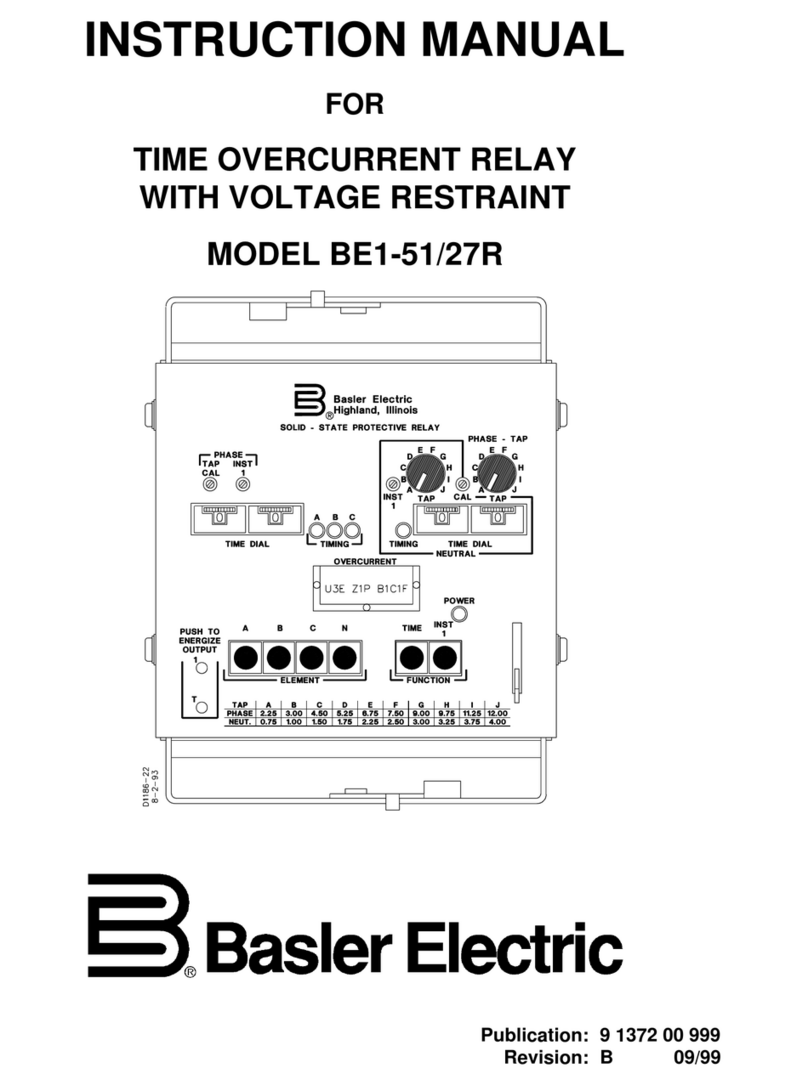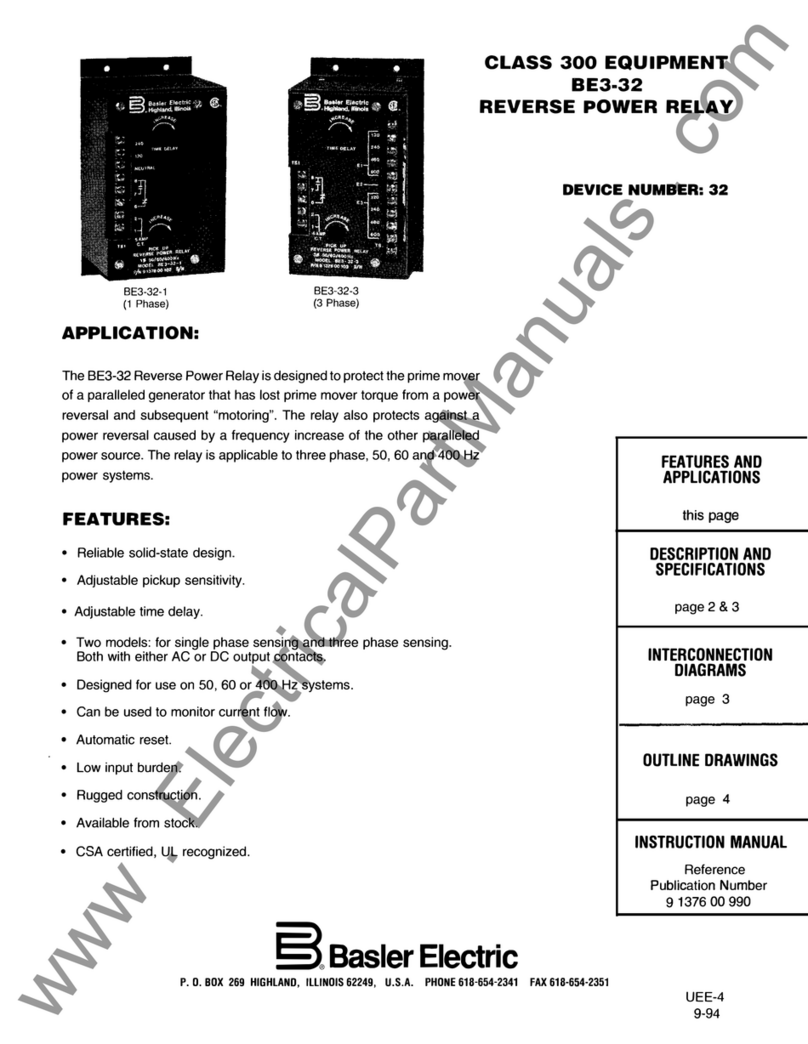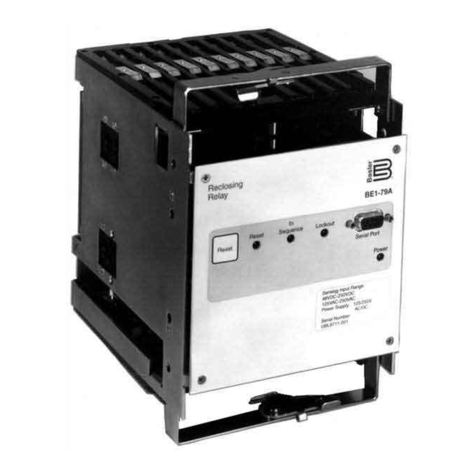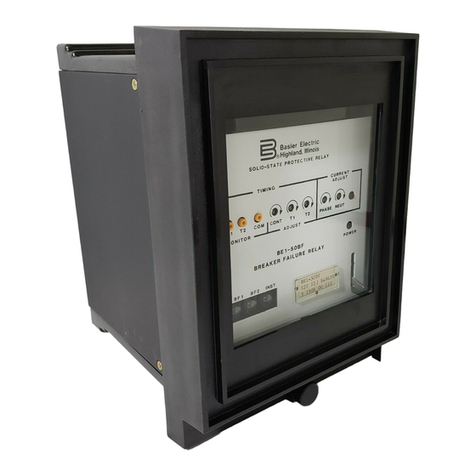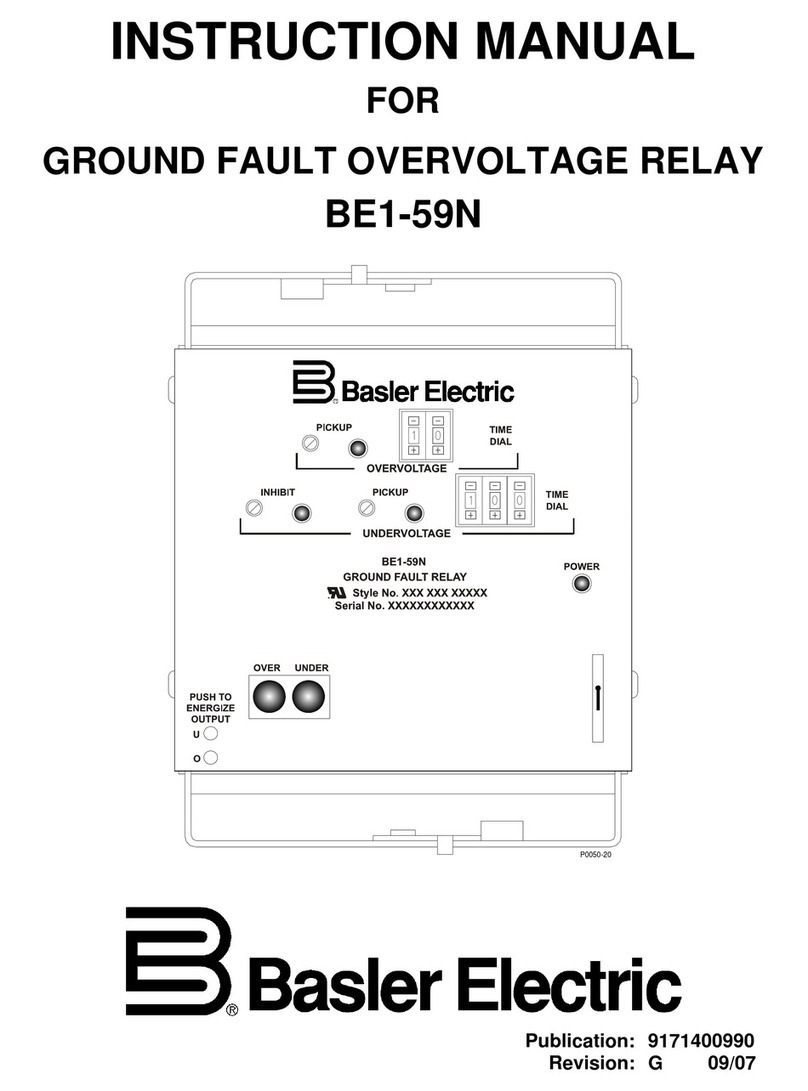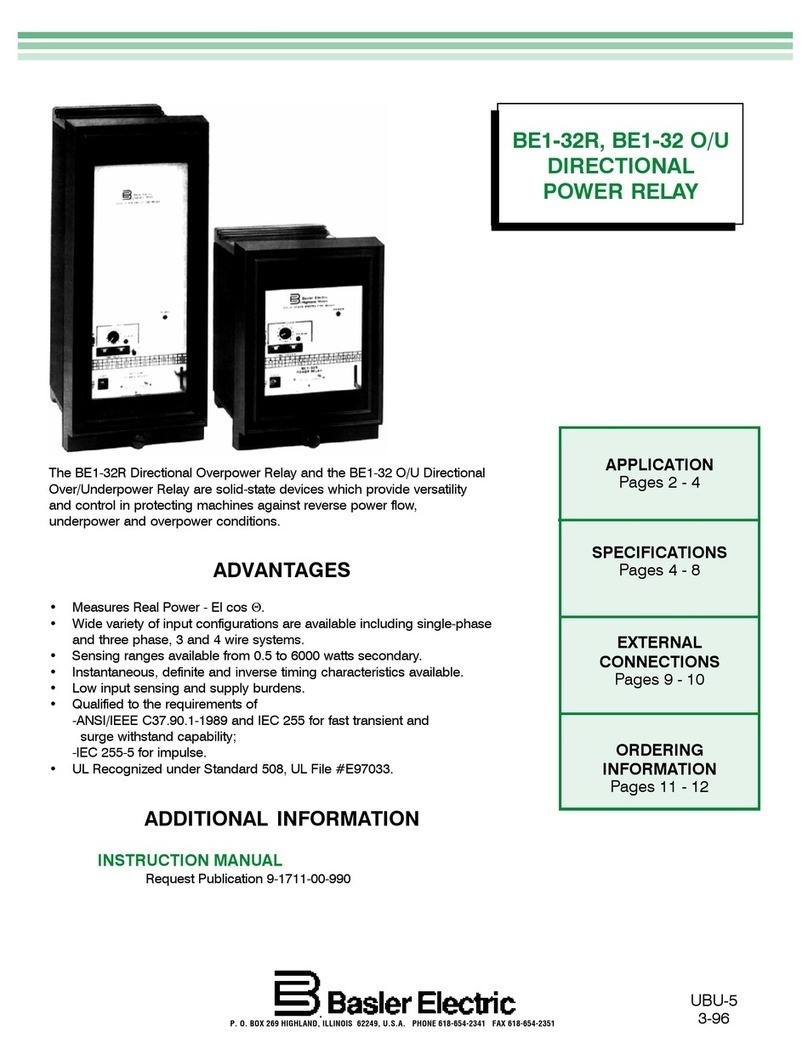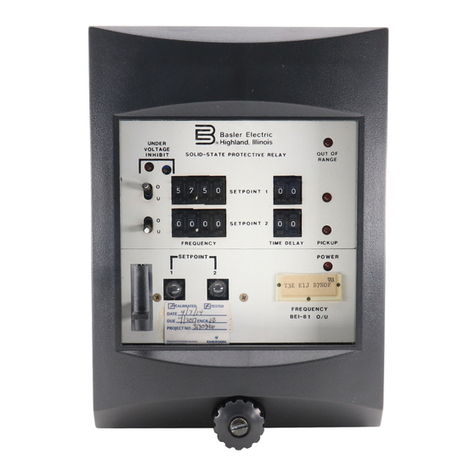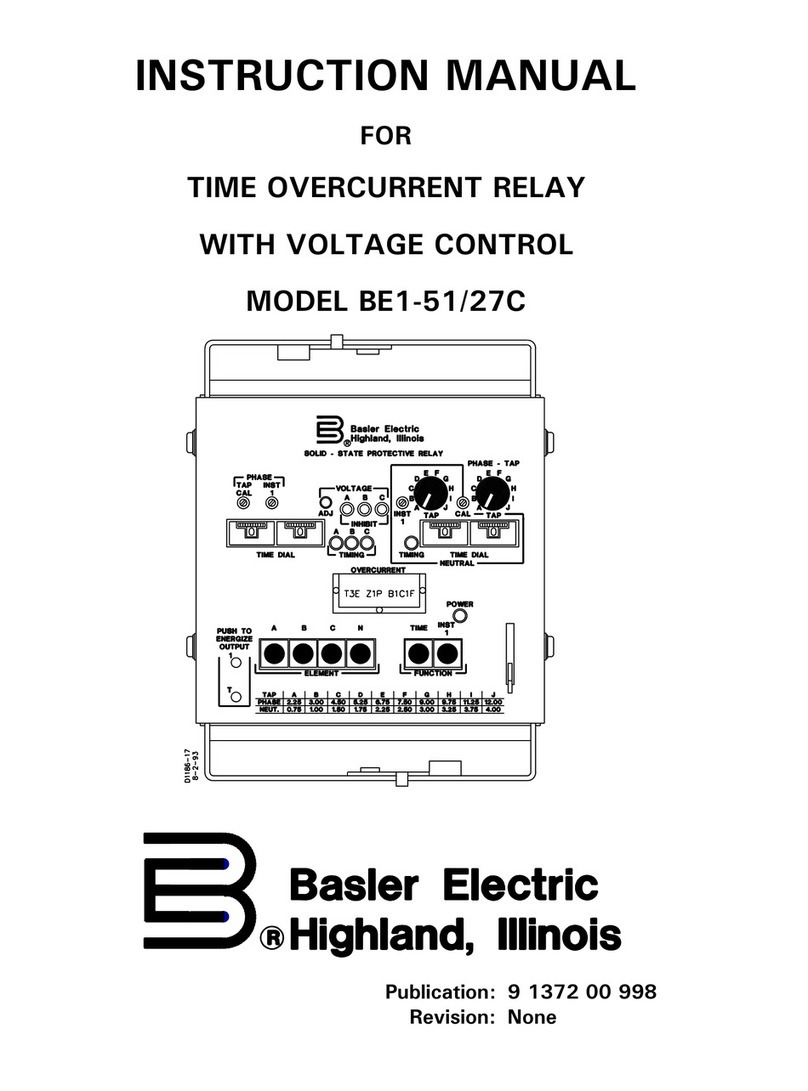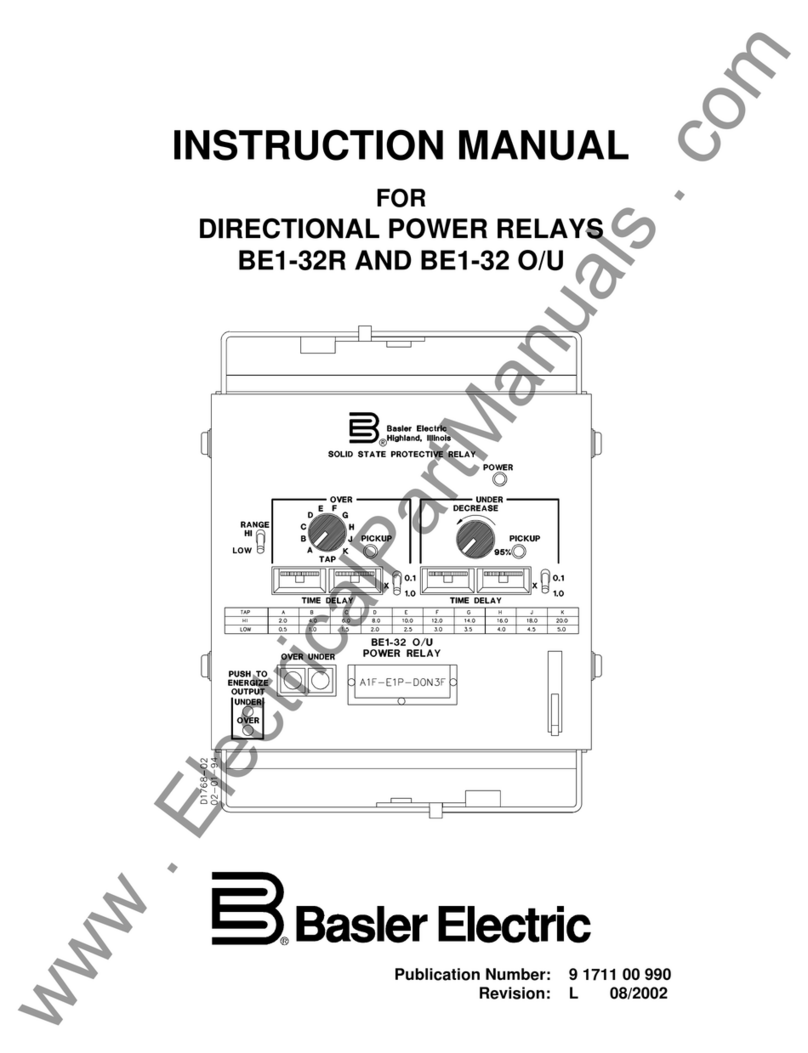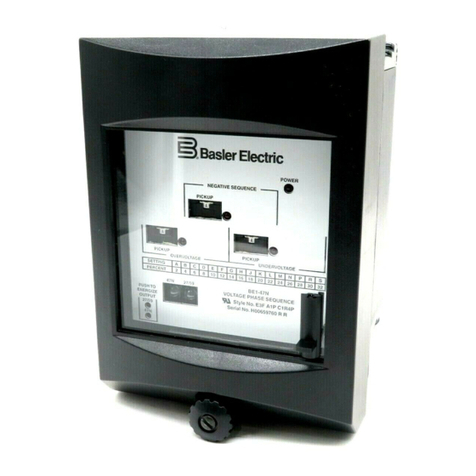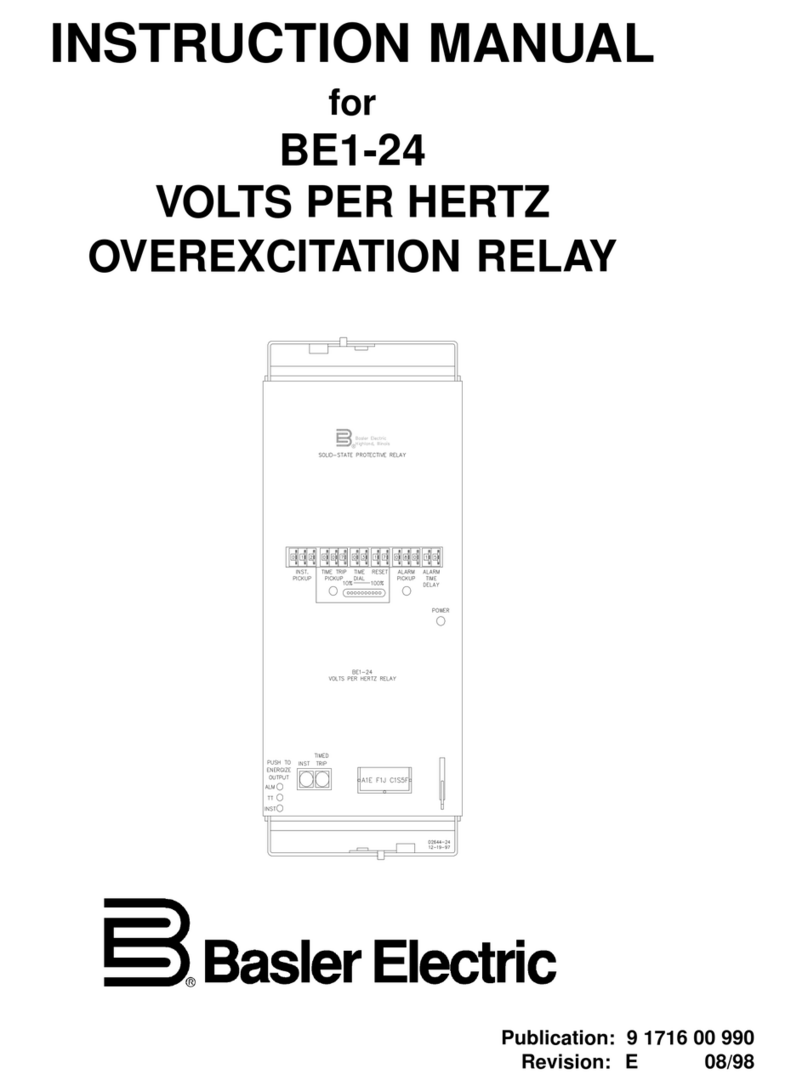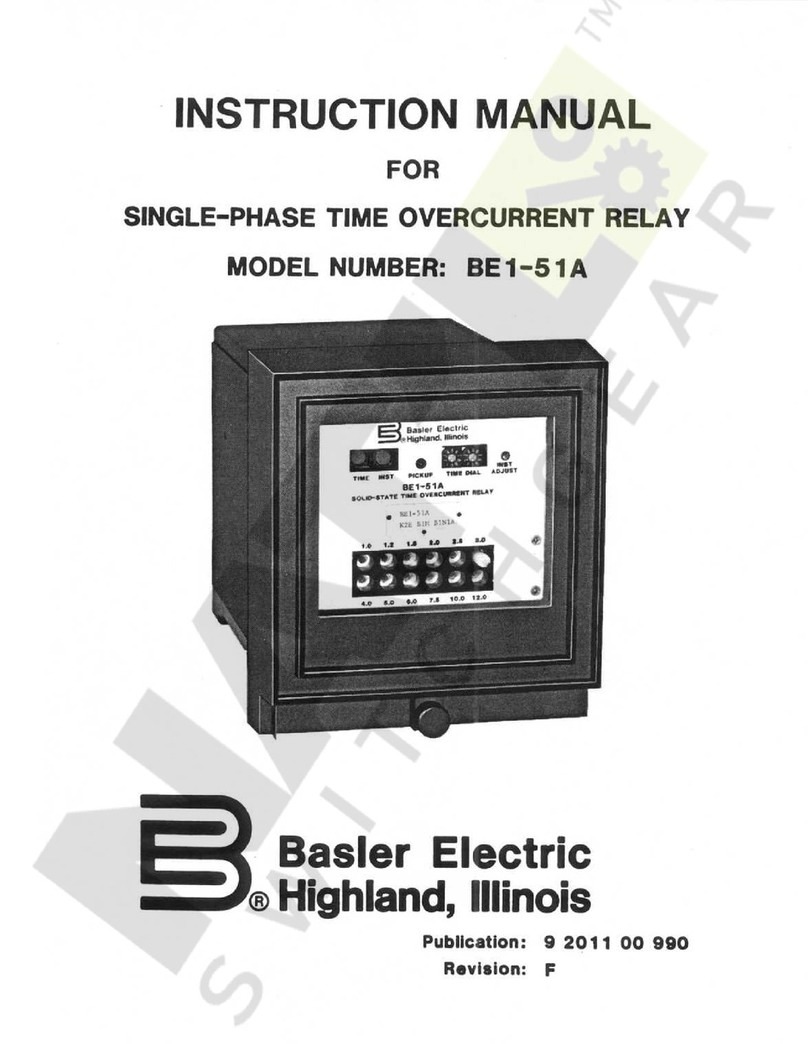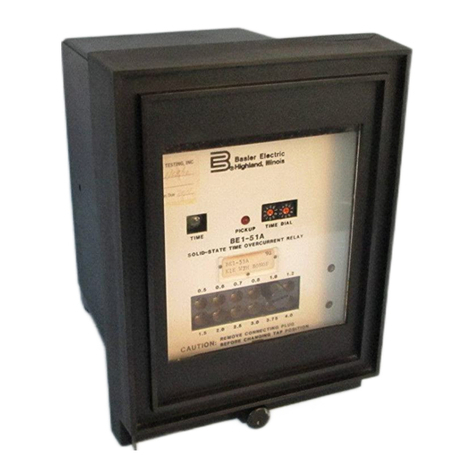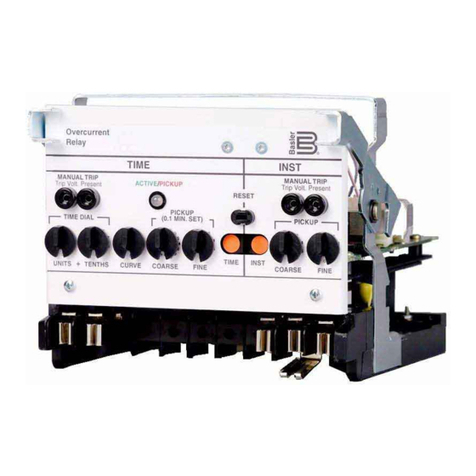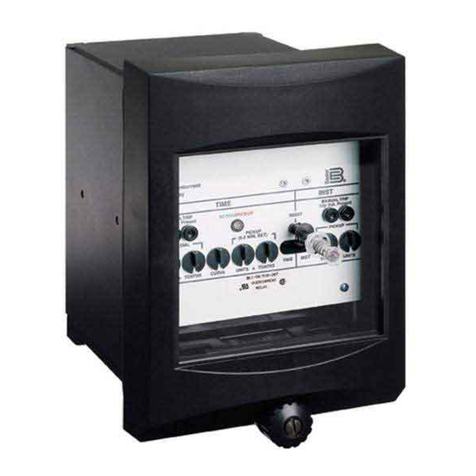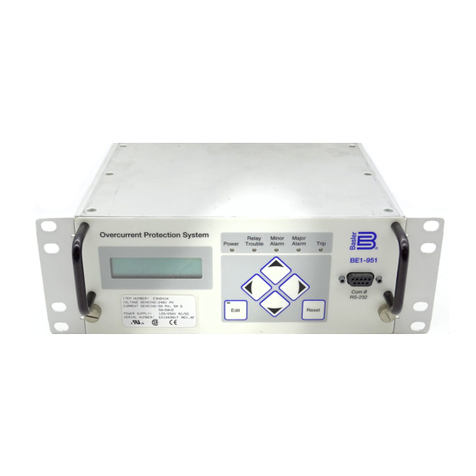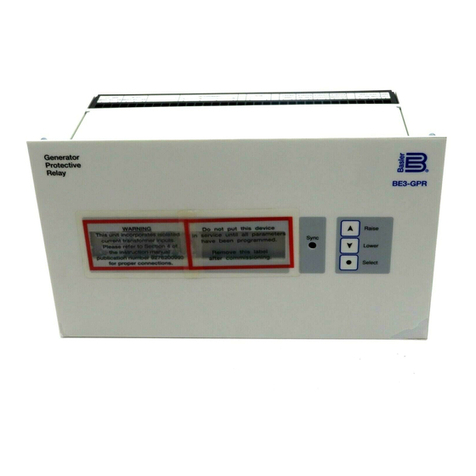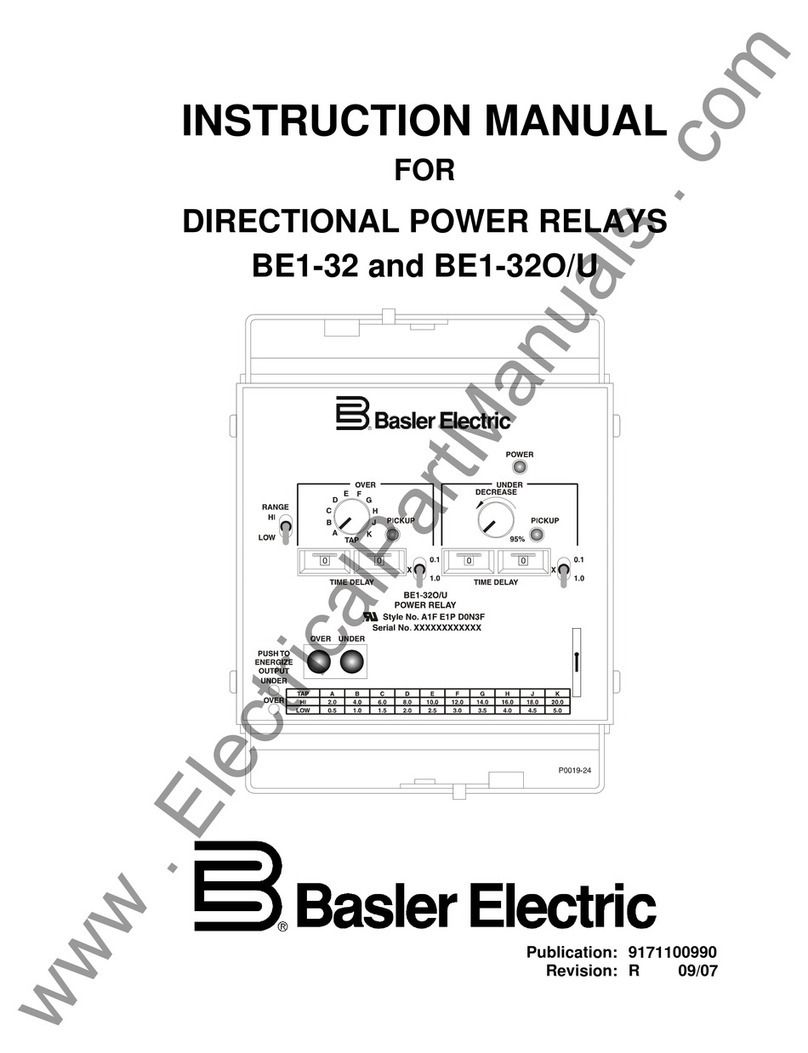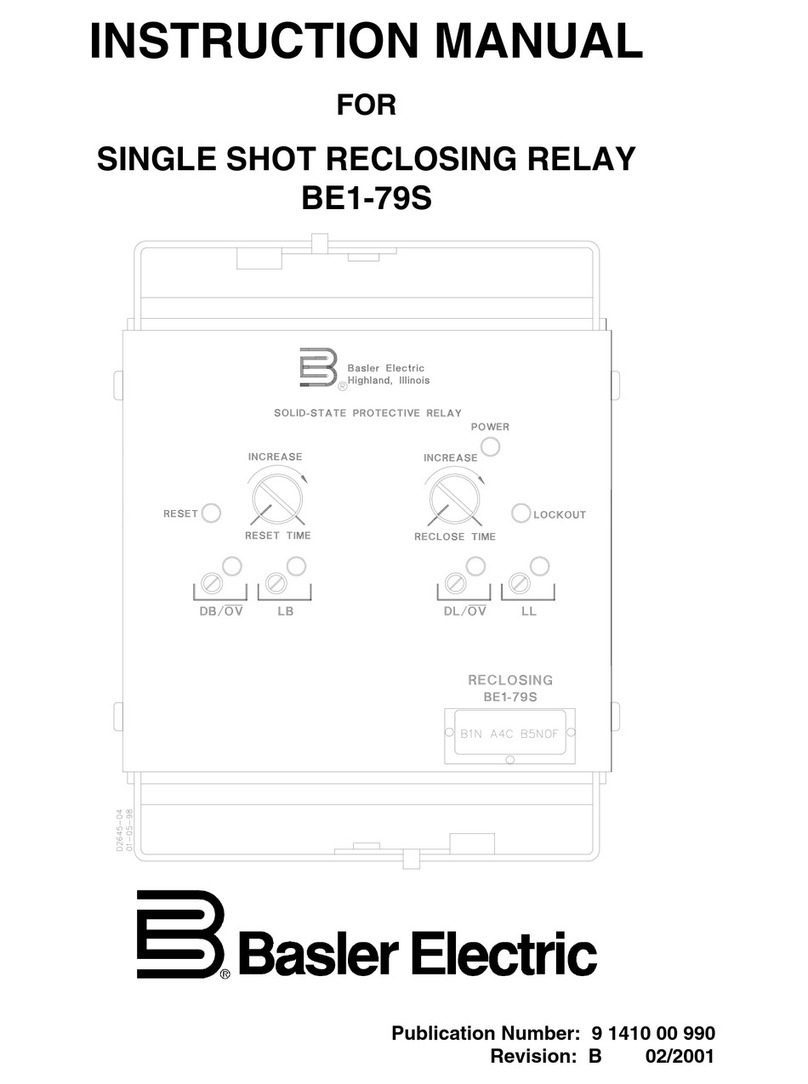
9170700990 Rev D BE1-60 Introduction v
CONTENTS
SECTION 1 •GENERAL INFORMATION................................................................................................ 1-1
PURPOSE........................................................................................................................................... 1-1
APPLICATION .................................................................................................................................... 1-1
SETTING THE RELAY........................................................................................................................ 1-2
Setting Example for Sensing Input Types E and F....................................................................... 1-2
MODEL AND STYLE NUMBER.......................................................................................................... 1-3
Style Number Example................................................................................................................. 1-3
SPECIFICATIONS.............................................................................................................................. 1-3
Sensing......................................................................................................................................... 1-5
Pickup........................................................................................................................................... 1-5
Dropout......................................................................................................................................... 1-5
Timing........................................................................................................................................... 1-5
Power Supply................................................................................................................................ 1-5
Target Indicators........................................................................................................................... 1-5
Outputs......................................................................................................................................... 1-6
Shock............................................................................................................................................ 1-6
Vibration........................................................................................................................................ 1-6
Dielectric Strength........................................................................................................................ 1-6
Surge Withstand Capability.......................................................................................................... 1-6
Radio Frequency Interference (RFI)............................................................................................. 1-6
Fast Transient............................................................................................................................... 1-6
Impulse......................................................................................................................................... 1-6
Temperature................................................................................................................................. 1-6
UL Recognition............................................................................................................................. 1-6
GOST-R........................................................................................................................................ 1-6
Weight........................................................................................................................................... 1-6
Case Size ..................................................................................................................................... 1-6
SECTION 2 •CONTROLS AND INDICATORS ....................................................................................... 2-1
INTRODUCTION................................................................................................................................. 2-1
SECTION 3 •FUNCTIONAL DESCRIPTION........................................................................................... 3-1
INTRODUCTION................................................................................................................................. 3-1
STEP-DOWN TRANSFORMERS....................................................................................................... 3-1
FULL-WAVE RECTIFIERS AND INTEGRATORS............................................................................. 3-1
DIFFERENTIAL AMPLIFIERS............................................................................................................ 3-1
LIMIT SETTING .................................................................................................................................. 3-2
LIMIT COMPARATORS...................................................................................................................... 3-2
OUTPUTS........................................................................................................................................... 3-2
OUTPUT TEST PUSHBUTTONS....................................................................................................... 3-2
AUXILIARY OUTPUTS....................................................................................................................... 3-2
POWER SUPPLY ............................................................................................................................... 3-7
POWER SUPPLY STATUS OUTPUT................................................................................................ 3-2
TARGET INDICATORS ...................................................................................................................... 3-2
Internally Operated Targets.......................................................................................................... 3-2
Current Operated Targets ............................................................................................................ 3-2
SECTION 4 •INSTALLATION.................................................................................................................. 4-1
INTRODUCTION................................................................................................................................. 4-1
RELAY OPERATING GUIDELINES AND PRECAUTIONS ............................................................... 4-1
MOUNTING......................................................................................................................................... 4-1
CONNECTIONS.................................................................................................................................. 4-6
MAINTENANCE.................................................................................................................................. 4-7
STORAGE........................................................................................................................................... 4-7
SECTION 5 •TESTING ............................................................................................................................ 5-1
OPERATIONAL TEST PROCEDURE................................................................................................ 5-1
